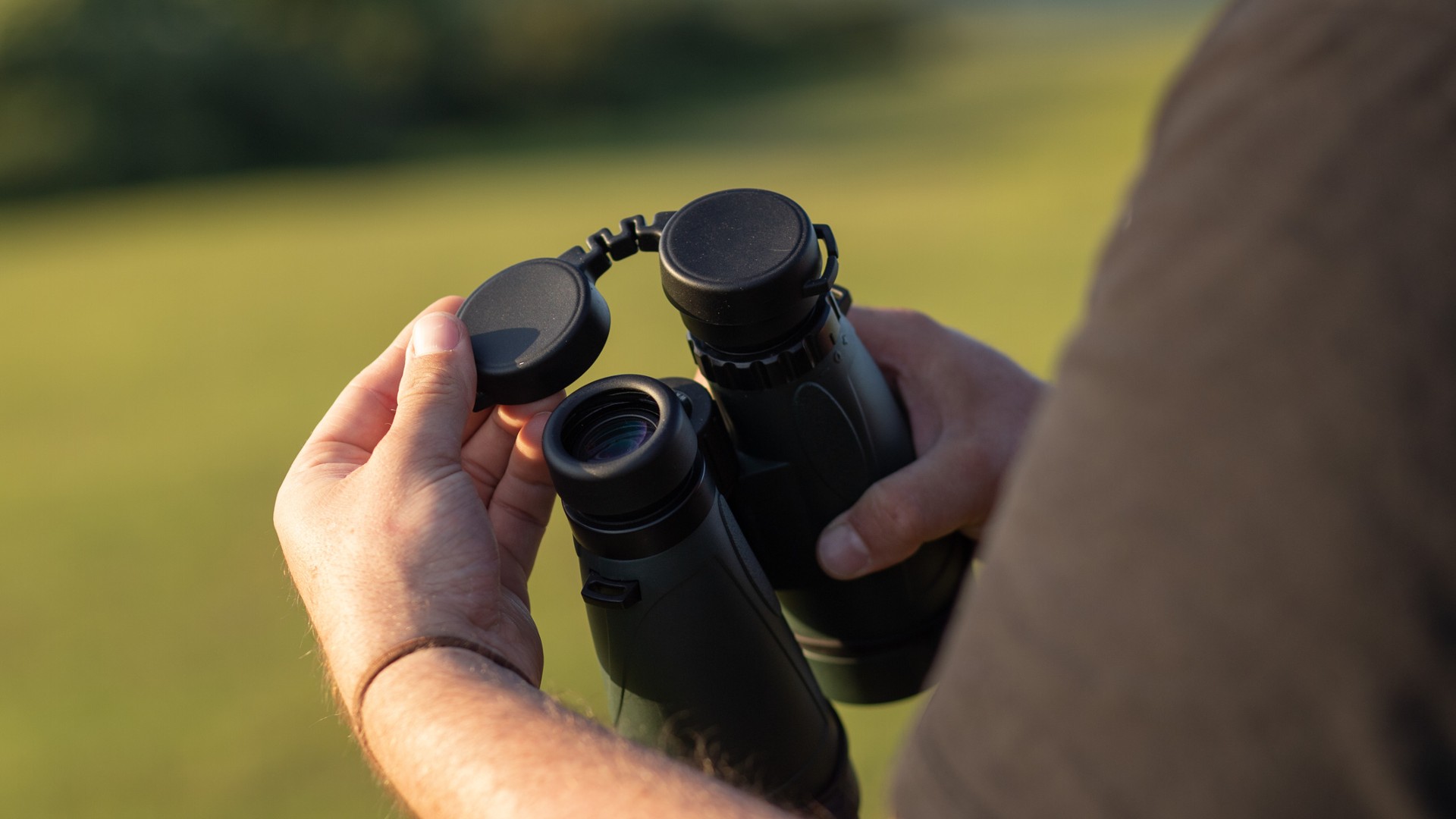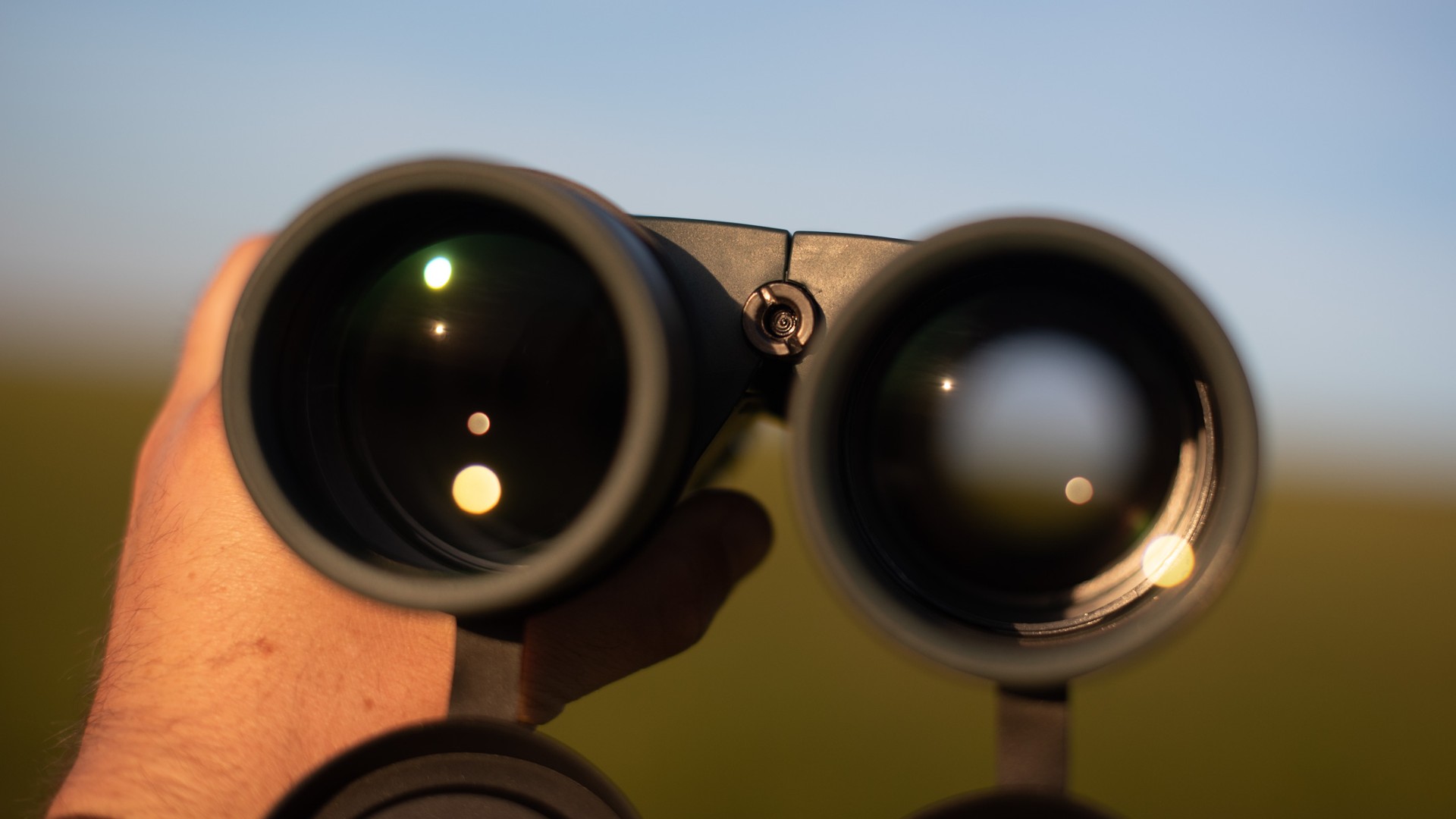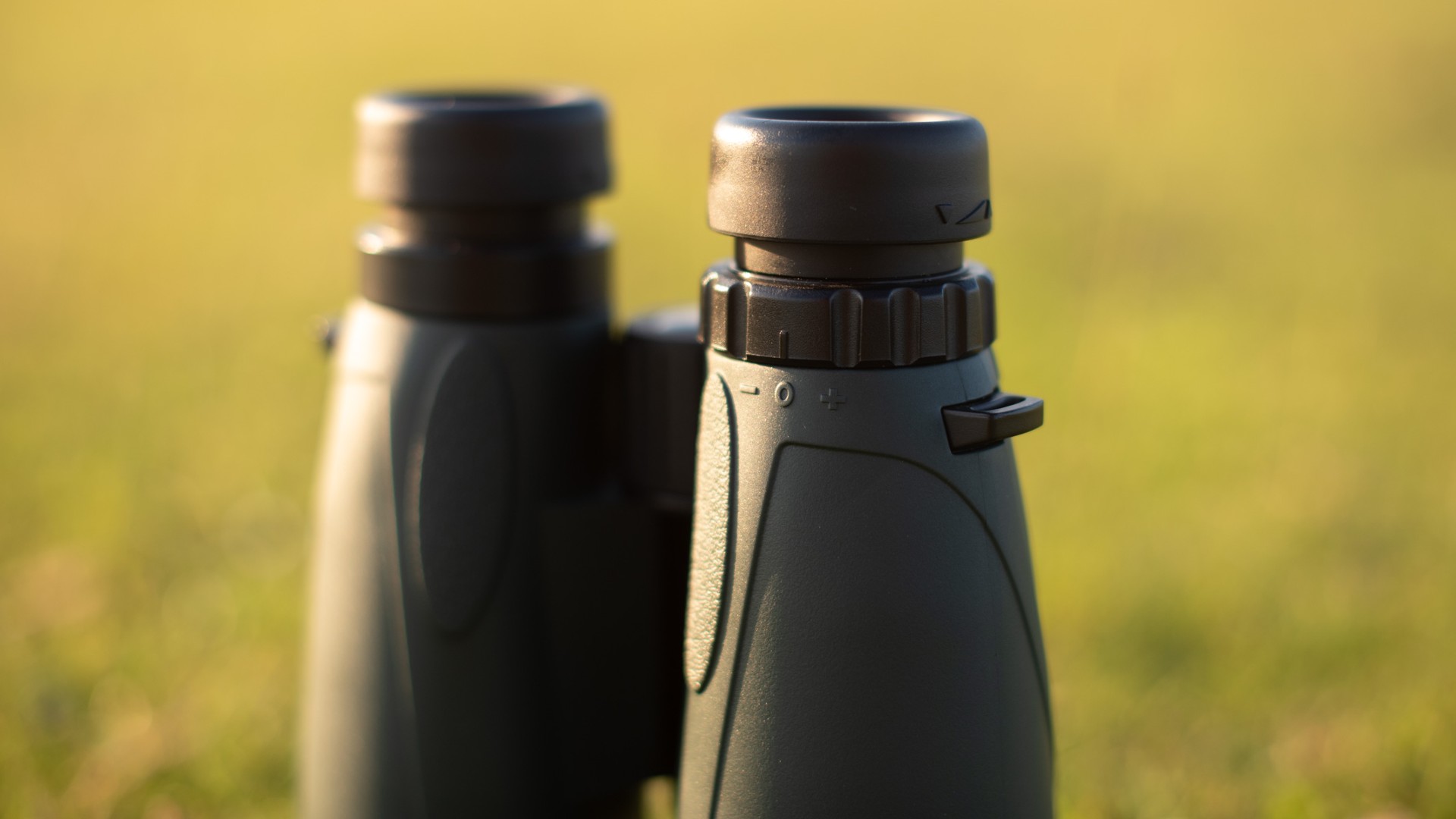Live Science Verdict
We really like the Celestron Nature DX 12x56 binoculars, their focal length and light weight are perfect qualities for stargazing handheld or for casual birding and wildlife use. They’re not the sharpest, but its good build quality and unlosable lens caps make these binoculars one of our favorites.
Pros
- +
Twisting eyecups are fully adjustable
- +
Close focusing down to 9.8 ft (2.9 m)
- +
Comfortable to use with good grips
Cons
- -
Not the sharpest image
- -
Some chromatic aberration
Why you can trust Live Science
Weight: 36.2 oz (1028 g)
Magnification: 12x
Objective lens diameter: 56 mm
Angular field of view: 5.5 degrees
Eye relief: 0.63-inch / 16 mm
Though priced as entry-level, the Celestron Nature DX 12x56 binoculars actually punch above their weight with impressive brightness, clarity, and build quality. With an excellent magnification for viewing the night sky, these binoculars are also adept at wildlife viewing (as the name would suggest) and give good close-focusing ability for birders.
Phase coatings and BaK-4 glass give flare-free, sharp results, but we are surprised they’re not a little sharper, though considering their low cost, we’ll let this slide. The Celestron Nature DX 12x56 are fully rubber armored in green and completely waterproof. Rain guards protect lens elements from extraneous water too. Plus, the strong twist-up eyecups keep the binoculars accessible for glasses wearers utilizing the full 16 mm eye relief.
These binoculars are equally useful at home viewing garden birds through the window and gazing up at city night skies. They’ll also provide excellent image quality for observing the night sky when on location. This selection of the best astronomy books will help you find your way around the cosmos.
Fog-proof and nitrogen purged, the Celestron Nature DX 12x56 binoculars can stand up to all kinds of weather and climate. Another plus point is that these binoculars are compact enough to fit in a small rucksack or glovebox in a vehicle. Although, if you're after something smaller for you or your little one, then you might want to check out these best binoculars for kids instead.
Celestron Nature DX 12x56 binoculars review: Design

- Attractive green finish with comfortable grips
- Twisting eyecups make adjusting for spectacle wearers a breeze
- Lens covers are attached together and hard to lose
True to the Nature name, Celestron has donned a natural-toned green on the DX 12x56s (just like the rest of their whole Nature range) which we think looks smart whilst adding a splash of color. The grip is non-slip without being tacky to the touch and we imagine using these in wet conditions or even through gloves would be easy. The Celestron Nature DX 12x56 binoculars also come with a handy carry pouch to protect them when stored in a bag.
Adjustments can be made on the eyecups themselves by twisting them back and forth to tweak the eye relief, which is especially helpful for those who wear glasses. The diopter ring is smooth and comfortable with satisfying resistance as it’s moved to achieve optimal focus.
Celestron has done well to include every necessary in-built accessory to make these binoculars useful for adults and slightly older kids too. For example, the objective lens caps fit snugly and remain attached to the binoculars when taking off the lenses themselves, meaning you won’t be losing them in the bag. When you’re done, just lift them up and pop them back on and you’re ready to store them away again. Or, you can continue walking with them on the neck strap, protecting the lenses from the elements. The same is true for the ocular lenses, with the two caps being attached with a flexible bridge made from the same rubberized material as the caps themselves. Even when stored folded open or closed, the caps remain on the ocular lenses keeping the glass free of dirt and debris.
Celestron Nature DX 12x56 binoculars review: Performance

- Full, bright image is delivered
- Very useable magnification for stargazing and wildlife alike
- Not as sharp as we were hoping for
Once the eyecups are set to the right distance for your eyes, we hope you’ll be as impressed as we were with the size of the image and just how bright it is. Viewing the full moon feels like looking up at a streetlight as its beams reflected light down into the binoculars. Thanks to the BaK-4 glass images when observing were clear and detailed. We did find a little chromatic aberration around contrasted edges during the day, but for night-time use and while stargazing this wasn’t very noticeable.
A generous 16 mm eye relief makes them useable for those that need to wear glasses, but for users that have glasses that sit further away from their eyes (or those with slightly deeper set eyes) may have trouble getting the adjustments right and could suffer with vignetting when looking through them.
One thing we particularly love about these binoculars is that they focus close. Down to 9.8 ft (2.9 m) the Celestron Nature DX 12x56 are ideal for use as a wildlife binocular for viewing small mammals or birding. Even around the home they produce good quality views when observing birds at the feeder in the garden, revealing exquisite feather detail.
Considering these are BaK-4 glass, we were surprised to find that an old pair of 70s Russian binos we had knocking around the back of our car were actually sharper by comparison. This softness isn’t anything to worry too much about because, for the money, they still produce detailed views good enough for all but professional users.
Celestron Nature DX 12x56 binoculars review: Functionality

- Can be mounted to a tripod for easier night sky viewing
- Focus knob is smooth and controllable
- Easy to use with minimal setup beyond the diopter
While the price of these may be more towards the entry-level range, these binoculars function like more expensive mid-level binos and are suitable for a range of subjects. The lenses are phase coated and the binoculars themselves are fully waterproof to ensure you can use them whatever the weather. Substantial rain guards keep glass elements dry and free of debris (unless holding directly into rain). These binoculars also come with a neck strap, lens caps all round, a carrying case, rain guards, a lens cloth for cleaning, and an instruction manual for those new to using binoculars.
The Celestron Nature DX 12x56’s hinge provides ample spread for all kinds of wide or narrow set eyes. We also found that focus knob provides enough resistance to hold in place but is smooth enough to adjust even when wearing gloves. We liked the accuracy with which we can focus on subjects, especially when trying to nail pin-sharp focus on distant stars and planets like Jupiter.
These binoculars also have a mount to affix them to an optional tripod for long skywatching sessions or when fine-tuning composition to better study certain patches of the sky. However, a tripod isn’t necessary for use as these binoculars come in at just over 36 oz (1028 g) which is a comfortable weight to hold for long periods for all except young children and those with arm-mobility issues.
Should I buy the Celestron Nature DX 12x56 binoculars?
If you want a good pair of binoculars that are sharp (for their price), comfortable to hold, and give a bright reproduction of celestial objects then the Celestron Nature DX 12x56 binoculars are for you. They won’t stand out amongst bush and shrubs thanks to their green color, so wildlife won’t be spooked when you take them into the field. Even at a close focusing distance of just 9.8 ft, these binoculars are perfect for bird watching.
You’ll be hard-pressed to find a pair of binoculars that offer all the features and clever accessories that these do, especially at such a reasonable price point. True, we found them ever-so-slightly soft, but for the price, we can’t complain. We’d happily recommend the Celestron Nature DX 12x56 to anyone who needs a good pair of field binoculars and wants to explore the night sky without the learning curve and expense of investing in a telescope.
If this product isn’t for you
Not everyone will want something quite this big (though they’re not huge), so we’d recommend opting for something a little more compact like the Olympus WP II 8x25. These have large objective lenses and a sturdy build quality, but are much smaller than the Nature DX 12x56’s and only weighs 9.17 oz.
Stargazers that want ultimate reach and are happy to mount binoculars on a tripod to get it (rather than shelling out for a tripod) may want to consider a pair of Celestron SkyMaster 25x100 binoculars. This is essentially two telescopes strapped together in the form of binoculars. Don’t think you’ll be heading out to use them for travel photography though because at 9 lbs 12 oz they’ll cause your shoulders to burn before you can get a good look at the night sky. That, and due to their hefty weight you won’t be able to hold them steady enough unless you bring a tripod, too. They are fantastic for viewing deep sky objects though and have individual eyepiece adjustment (instead of relying on a single diopter).

Jase Parnell-Brookes is the Managing Editor for e-commerce for Live Science and Space. Previously the Channel Editor for Cameras and Skywatching at Space, Jase has been an editor and contributing expert across a wide range of publications since 2010. Based in the UK, they are also an award-winning photographer and educator winning the Gold Prize award in the Nikon Photo Contest 2018/19 and named Digital Photographer of the Year in 2014. After completing their Master's degree in 2011 and qualifying as a teacher in 2012, Jase has spent the last two decades studying and working in photography and publishing in multiple areas, and specializes in low light optics and camera systems.











